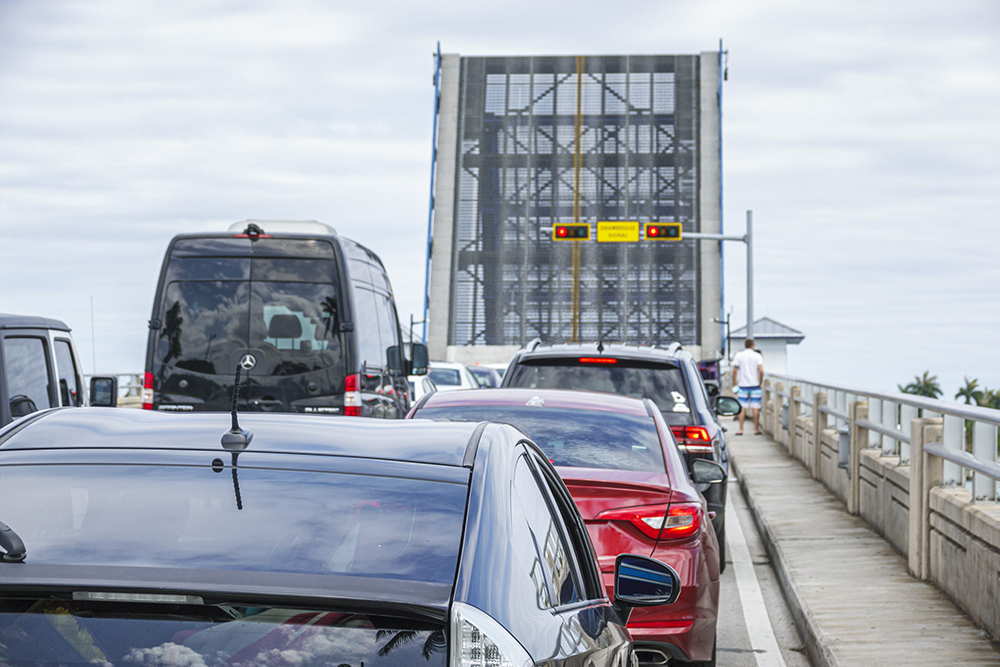
迈阿密和拉斯维加斯等地向来是美国人休闲旅游的热门目的地。近年来,这些所谓的“阳光地带”城市人口快速增长,这虽然有利于当地的商业发展,却给当地的上班族们带来了苦恼。
今年,迈阿密被评为全美道路交通状况第五差的城市,而“阳光地带”上的其他城市,例如纳什维尔和拉斯维加斯等,也一向以拥堵著称,司机每天都要浪费大量时间堵在路上。不过交通堵塞带来的后果,并不仅仅是让人感到心塞而已,它还有可能导致这些城市在未来几年出现经济放缓。
自从新冠疫情爆发以来,美国的不少大城市出现了人口外流现象,而迈阿密等城市则接收了很多来自这些大城市的流出人口。这股移民潮是多种因素共同推动的,比如佛罗里达州的低税收、全年温暖的天气、科技行业的蓬勃发展,以及远程办公的普及等等。根据交通分析公司INRIX的数据,2022年迈阿密的交通堵塞时间比2019年整整增加了30%,达到了105个小时。
相比之下,拉斯维加斯的司机去年堵在路上的时间只有41个小时,要远远低于迈阿密,但仍然比新冠疫情前提高了156%。纳什维尔去年首次跻身全美交通拥堵最严重的25个城市之列,去年司机人均堵在路上的时间达到了41个小时,比新冠疫情前增加了14%。
INRIX公司的交通分析师鲍勃·皮舍认为,一些城市交通拥堵的主要原因,就是人口的增长,以及由此带来的交通活动的增加。
皮舍在接受《财富》采访时表示:“一个城市的人口增长,意味着需要更多的卡车来运送货物和提供服务。所以人口增加后,卡车、商务车、面包车、水罐车等各种车辆对道路的需求也会越来越多。”
皮舍还指出,交通活动的增加,也与疫情防控措施放宽,以及基建项目的建设和人的流动模式等因素有关。
“阳光地带”城市还有一些因素吸引着外来人口,那就是充满活力的城市生活和较低的生活成本。但是随着通勤时间的增加,很多人可能被迫搬到市中心附近居住,而这最终会推高当地的房价。据《华尔街日报》(Wall Street Journal)报道,由于缺乏公共交通网络,这些城市在高峰时段很容易发生交通堵塞。这除了会对当地居民的生活造成困扰,还会吓跑一些原本打算迁往这里的企业,从而威胁当地的经济增长。
皮舍称,交通堵塞是一个城市经济活动繁忙的外部体现,不过从商业的角度看,它也会带来一些问题。
他说:“交通堵塞可能会导致时间、生产率和能源的损失,如果你是一家企业的话,这些就都是交通堵塞带来的成本。所以要有一定水平的基础设施来适应这些商业活动。”
必须指出的是,交通拥堵状况激增并不仅限于“阳光地带”城市。2022年,芝加哥的司机平均要堵在路上156个小时,为全美最多,而且比新冠疫情前增长了7%。波士顿的交通拥堵时间为人均134小时,也远超迈阿密,但比新冠疫情前低了10%。纽约和费城等城市的道路拥堵程度则远低于新冠疫情前的水平。
然而,一些“阳光地带”城市试图通过扩建道路和公交网络来减缓交通拥堵。田纳西州的州长正在考虑对高速公路收费,以缓解高峰时期的拥堵。佛罗里达州的州长罗恩·德桑蒂斯则计划拿出70亿美元用于基建投资,包括用于修路等等。(财富中文网)
译者:朴成奎
迈阿密和拉斯维加斯等地向来是美国人休闲旅游的热门目的地。近年来,这些所谓的“阳光地带”城市人口快速增长,这虽然有利于当地的商业发展,却给当地的上班族们带来了苦恼。
今年,迈阿密被评为全美道路交通状况第五差的城市,而“阳光地带”上的其他城市,例如纳什维尔和拉斯维加斯等,也一向以拥堵著称,司机每天都要浪费大量时间堵在路上。不过交通堵塞带来的后果,并不仅仅是让人感到心塞而已,它还有可能导致这些城市在未来几年出现经济放缓。
自从新冠疫情爆发以来,美国的不少大城市出现了人口外流现象,而迈阿密等城市则接收了很多来自这些大城市的流出人口。这股移民潮是多种因素共同推动的,比如佛罗里达州的低税收、全年温暖的天气、科技行业的蓬勃发展,以及远程办公的普及等等。根据交通分析公司INRIX的数据,2022年迈阿密的交通堵塞时间比2019年整整增加了30%,达到了105个小时。
相比之下,拉斯维加斯的司机去年堵在路上的时间只有41个小时,要远远低于迈阿密,但仍然比新冠疫情前提高了156%。纳什维尔去年首次跻身全美交通拥堵最严重的25个城市之列,去年司机人均堵在路上的时间达到了41个小时,比新冠疫情前增加了14%。
INRIX公司的交通分析师鲍勃·皮舍认为,一些城市交通拥堵的主要原因,就是人口的增长,以及由此带来的交通活动的增加。
皮舍在接受《财富》采访时表示:“一个城市的人口增长,意味着需要更多的卡车来运送货物和提供服务。所以人口增加后,卡车、商务车、面包车、水罐车等各种车辆对道路的需求也会越来越多。”
皮舍还指出,交通活动的增加,也与疫情防控措施放宽,以及基建项目的建设和人的流动模式等因素有关。
“阳光地带”城市还有一些因素吸引着外来人口,那就是充满活力的城市生活和较低的生活成本。但是随着通勤时间的增加,很多人可能被迫搬到市中心附近居住,而这最终会推高当地的房价。据《华尔街日报》(Wall Street Journal)报道,由于缺乏公共交通网络,这些城市在高峰时段很容易发生交通堵塞。这除了会对当地居民的生活造成困扰,还会吓跑一些原本打算迁往这里的企业,从而威胁当地的经济增长。
皮舍称,交通堵塞是一个城市经济活动繁忙的外部体现,不过从商业的角度看,它也会带来一些问题。
他说:“交通堵塞可能会导致时间、生产率和能源的损失,如果你是一家企业的话,这些就都是交通堵塞带来的成本。所以要有一定水平的基础设施来适应这些商业活动。”
必须指出的是,交通拥堵状况激增并不仅限于“阳光地带”城市。2022年,芝加哥的司机平均要堵在路上156个小时,为全美最多,而且比新冠疫情前增长了7%。波士顿的交通拥堵时间为人均134小时,也远超迈阿密,但比新冠疫情前低了10%。纽约和费城等城市的道路拥堵程度则远低于新冠疫情前的水平。
然而,一些“阳光地带”城市试图通过扩建道路和公交网络来减缓交通拥堵。田纳西州的州长正在考虑对高速公路收费,以缓解高峰时期的拥堵。佛罗里达州的州长罗恩·德桑蒂斯则计划拿出70亿美元用于基建投资,包括用于修路等等。(财富中文网)
译者:朴成奎
Cities like Miami and Las Vegas have been known as hotspots for travel and leisure—think spring breaks and birthday bashes. In recent years, some of these “Sunbelt cities” have rapidly grown in population, which may have benefited business far more than it has benefited commuters.
Miami ranks fifth for the worst road traffic in the U.S. while drivers in its other Sunbelt cities like Nashville and Las Vegas also lost considerable time on the road last year. But the extended commute isn’t just about wasted hours in gridlock—it could also lead to slower economic growth in these cities in the coming years.
Since the start of the COVID-19 pandemic, some cities including Miami have been on the receiving end of an exodus from other parts of the country. That influx has been driven by a confluence of factors in Florida, such as lower taxes, remote work, warm weather year round, and a burgeoning tech industry. But for Miami, that population boom has translated into a 30% increase in time spent in traffic jams last year compared to 2019, or a total of 105 hours, according to traffic analysis company INRIX.
Meanwhile, Las Vegas drivers lost 41 hours each in traffic jams, far below Miami’s rate but still a 156% increase from the city’s pre-pandemic levels. For the first time, Nashville made it to the top 25 cities with the highest traffic delays after its drivers lost 41 hours each last year, a 14% increase from just before the pandemic.
One leading factor behind road congestion in certain cities is population growth and the increased activity necessary to support it, said Bob Pishue, transportation analyst at INRIX.
“We have to remember that having population increase also means more demand for trucks on the road to deliver goods and services,” Pishue told Fortune. “It’s not just people going there. [There is] more demand for the use of roads by trucks, commercial vehicles, vans, plumbing services and all those types of things.”
He also blamed the increased traffic on the lifting of COVID-19-linked restrictions, ongoing infrastructure projects, and the movement patterns of people.
Part of what makes Sunbelt cities appealing—their vibrant downtown areas and low cost of living—could now change as higher commute times force more people to move near the city centers, eventually pushing up real estate prices. The lack of public transport networks makes these cities prone to rush hour traffic jams, the Wall Street Journal reported. In addition to hours wasted for residents, road congestion is a deterrent for companies that are considering moving to any city, threatening local growth.
“Traffic is an externality of a good thing,” Pishue said, adding that even though congestion is a sign of bustling economic activity, it can also be a problem from a business standpoint.
“A reduced potential labor market, if you are a company or a business—lost time, productivity [and] fuel, those kinds of things are the big costs of congestion,” he said. “Basically, having levels of infrastructure to accommodate them [commercial activities] is a business decision.”
To be sure, the surge in traffic isn’t confined to Sunbelt cities. Chicago’s drivers lost the most amount of time commuting in the U.S. on average—156 hours each from delays in 2022. That’s a 7% increase compared to pre-pandemic levels. Traffic delays in Boston cost drivers 134 hours each, beating Miami by a big margin but still 10% lower than its traffic congestion before the pandemic. Cities like New York and Philadelphia are also well below pre-pandemic road congestion levels.
But Sunbelt cities are trying to get a grip on the traffic by expanding road and public transport networks. Tennessee’s governor is considering express tolls on highways which could help diffuse traffic by easing congestion during peak times. And Florida Gov. Ron DeSantis is looking to direct $7 billion in infrastructural investments including public roadways.






